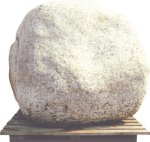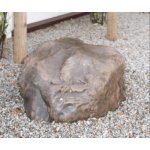Bestsellers
Buy Feature Stones for Zen Gardens
We can supply large or small stones and boulders suitable for placement in Zen Garden from 100mm to large Boulders up to 2m. These can be in mixed size on pallet
Glacial Boulders can be supplied drilled up to 1.2m for use in water features
The Art of Stones in Japanese Zen Gardens
In a Zen garden, stones and rocks are far more than decorative elements—they’re the very foundation of design and meaning. Representing real or mythical landforms such as mountains, islands, or sacred spaces, they carry symbolic weight. Yet their role is also functional: used as pathways, stepping stones, focal points, and architectural accents, each stone serves both aesthetic and spiritual purposes.
Take a moment to appreciate how even the smallest Japanese garden can become a sanctuary of peace through the thoughtful use of stones and “dry water”—raked sand or gravel representing flowing water. These quiet, contemplative designs speak volumes without a single word.
One of the earliest and most revered stone arrangements in Japanese gardens is the Shumisen grouping. At its heart is the Buddha Stone, representing the mythical Mount Shumisen—the sacred mountain where Buddha is said to reside. Surrounding it are smaller stones symbolizing his disciples, creating a central spiritual anchor in the garden.
Traditional stone groupings often revolve around sacred figures:
-
The Buddha Stone (Mida Butsu)
-
The Goddess Stone (Kwannon)
-
The Child’s Stone (Seishi)
These figures are not placed at random; their formation is an act of reverence and intention.
To build meaning and harmony into a Zen garden, five classic stone types are used in combination:
The Five Positive Stones:
-
Soul Stone (Reishoseki) – Low and vertical, representing the spirit.
-
Body Stone (Taidoseki) – Tall and upright, symbolizing a god or person.
-
Heart Stone (Shintaiseki) – A flat stone often placed at the center of a grouping.
-
Branching Stone (Shigyoseki) – Wider at the top, this stone helps link other stones together.
-
Ox Stone (Kikyakuseki) – Reclining in shape, used in harmony with the Branching Stone.
These stones are more than shapes—they are characters in the garden’s quiet narrative.
Stones to Avoid:
Just as some stones bring energy and balance, others disturb it. A few types are traditionally avoided in Zen gardens for both aesthetic and spiritual reasons:
-
Diseased Stones – Misshapen or deteriorated stones that feel unwell in the landscape.
-
Dead Stones – Misplaced vertically or horizontally, going against their natural orientation.
-
Pauper Stones – Isolated stones that lack connection to a larger grouping.
Additionally, cut, broken, or deformed stones can disrupt the garden’s Feng Shui, creating visual and energetic disharmony. Placement is just as important as selection—avoid positioning stones at right angles to buildings or too close to verandas, as this interferes with the natural flow of energy.
When arranged with intention, stones transform a simple plot of land into a poetic meditation. Each placement, each angle, speaks to centuries of tradition, balance, and beauty.
Speak to Spencer Lane on 07799847105 about your requirements
Large Granite
Buy Glacial Boulders
6 products
Buy Drilled and Natural Slate Stacks
4 products


 Home
Home













